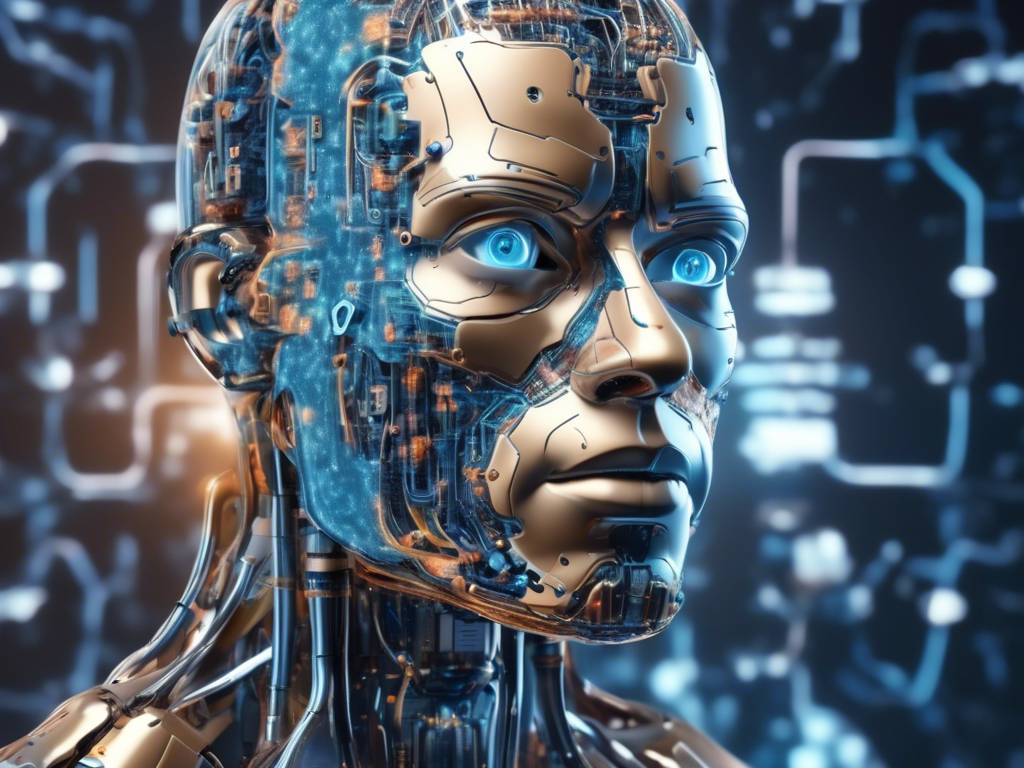Reimagining AI and Human Interaction for Optimal Results 🤖🤝
Are you curious about how AI and humans can work together effectively? In this discussion between an MIT PHD candidate and a professor, they delve into the importance of human design in maximizing the potential of AI. The conversation covers the transition from traditional AI research to a focus on human-centric AI applications, highlighting the need to prioritize the benefits of AI for humanity.
Transitioning from AI Research to Human-Centric Design 🔄
Pat, the PHD candidate, shares his journey from traditional AI research to a more human-centered approach at the MIT media lab. He emphasizes the shift from developing intelligent machines that could potentially replace or surpass humans to using AI to enhance human capabilities.
- Transition from AI Lab to Media Lab for Human-Centric Focus
- Concerns about Developing Intelligent Machines vs. Enhancing Human Intelligence
In today’s AI landscape, the focus is often on achieving Artificial General Intelligence (AGI) without considering the broader implications. Pat argues that the goal should be to leverage AI technologies to benefit humanity rather than striving for AI superiority.
Applications of Human-Centered AI 🧠🤖
Professor Patty Mars discusses projects within their group that aim to improve various aspects of human life using AI. From democratizing education to enhancing mental and physical health, the team explores real-world problems that can be addressed through AI solutions.
- AI Applications in Education, Healthcare, and Learning Enhancement
- Democratizing Learning with AI Tutors
- Improving Mental and Physical Health Through Personalized AI Systems
The conversation shifts to the historical debate between software acting as an agent to augment human capabilities versus direct manipulation. Patty emphasizes the importance of proactive AI systems that enhance human presence in the moment rather than detracting from it.
Human Design Challenges in AI Integration 🧠💡
Pat and Patty delve into the human design issues that arise when implementing AI solutions. They highlight the risks of over-reliance on AI and the potential degradation of human performance when individuals depend too heavily on AI recommendations.
- Human Trust and Understanding of AI Decisions
- Risks of Over-Reliance on AI Systems
- Implications for Human Decision-Making and Critical Thinking
Studies conducted by the group reveal the need for interfaces that engage users in critical thinking alongside AI systems to optimize decision-making processes. The goal is to create a collaborative environment where humans and AI work together rather than functioning independently.
Augmenting Human Intelligence Through Collaborative AI 🚀🤖
The discussion extends to the integration of AI in education and learning environments, emphasizing the importance of engaging learners in problem-solving and discovery. AI systems are viewed as tools to assist in decision-making rather than replace human cognitive processes.
- Role of AI in Education and Skill Development
- Engaging Learners in Critical Thinking and Problem-Solving
- Empowering Users to Discover Answers with AI Guidance
Pat underscores the interdisciplinary nature of AI development, highlighting the need to draw insights from fields such as psychology, cognitive science, and design. Viewing AI as a human-centric challenge rather than solely an engineering problem is crucial for successful integration.
Challenges and Opportunities in the AI Landscape 🌐🤖
As the conversation concludes, concerns are raised about the current focus on achieving AGI at the expense of human-centered AI development. The risk of another AI winter, where interest and funding for AI decline, looms large without a shift towards prioritizing human interests over technological advancement.
- Balance Between AGI Development and Human-Centric AI
- Concerns About Industry-Driven AI Development
- Opportunities for AI to Benefit Education, Healthcare, and Beyond
The dialogue encourages individuals interested in human-centered AI to conduct user studies and experiments to better understand how people interact with AI systems. By involving diverse perspectives and prioritizing human needs, the future of AI can be shaped to benefit society as a whole.
Concluding Thoughts and Call to Action 🌟
As AI continues to advance, the conversation between Pat and Patty highlights the critical need for a human-centered approach to AI development. By fostering collaboration between humans and AI, we can unlock the full potential of these technologies while ensuring that they serve the best interests of humanity.





 By
By
 By
By

 By
By
 By
By